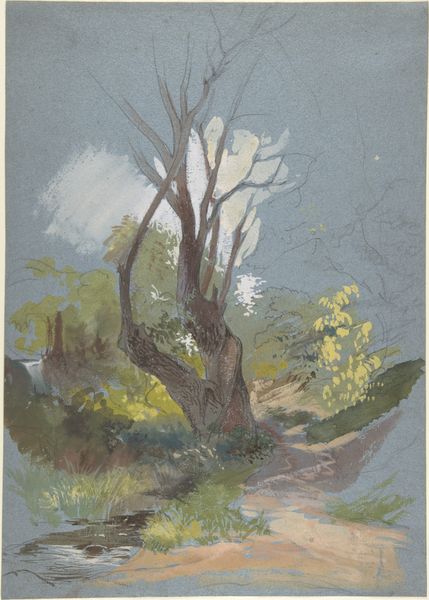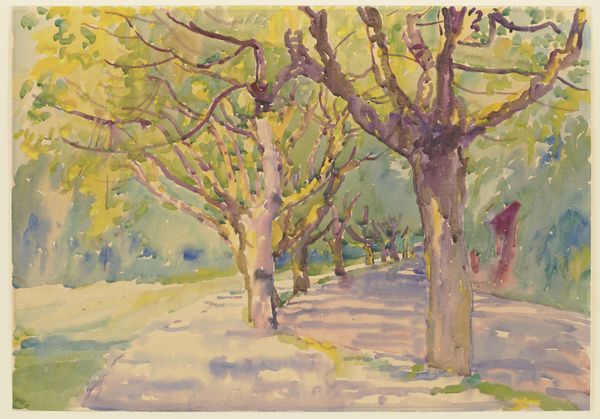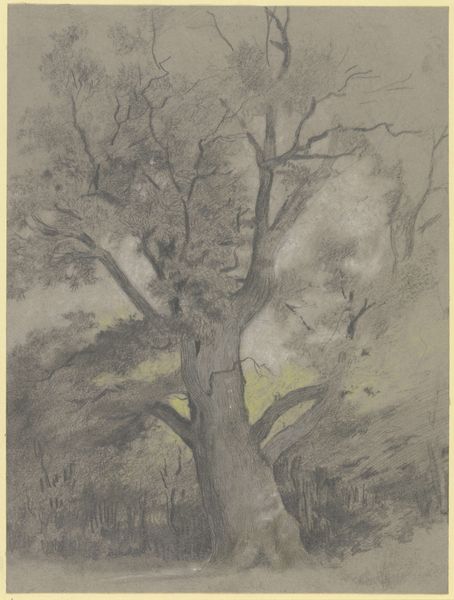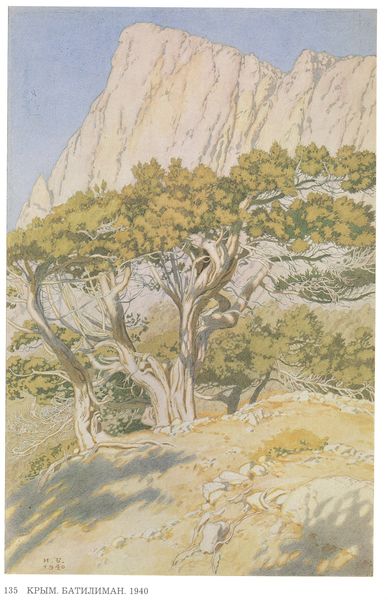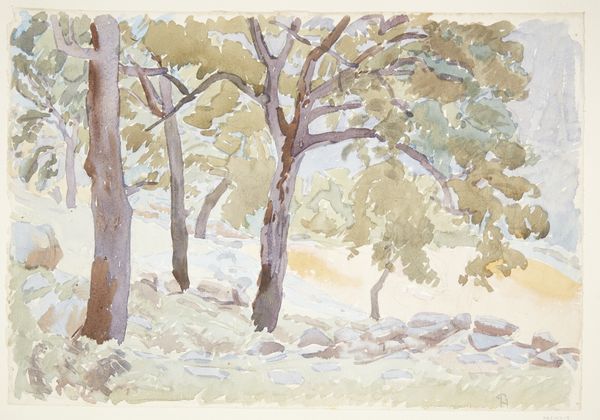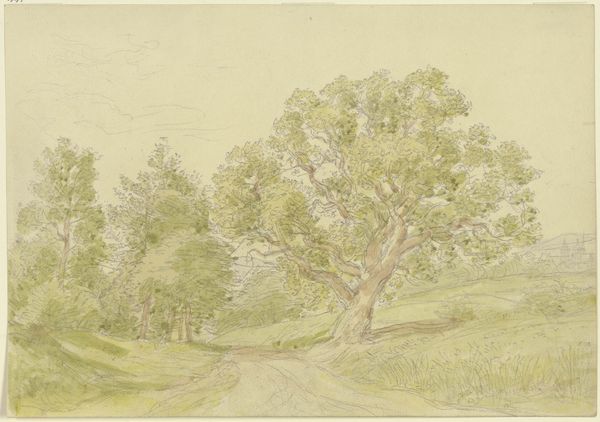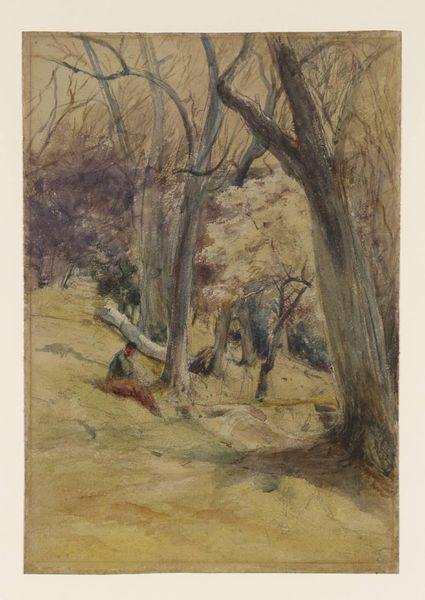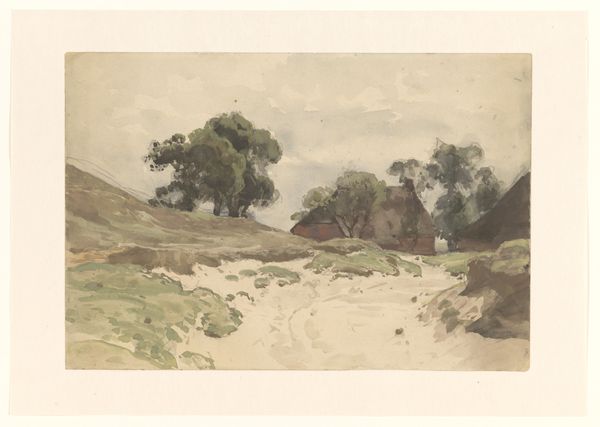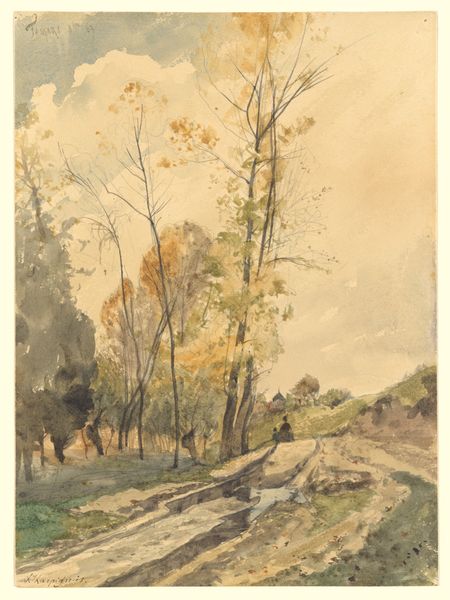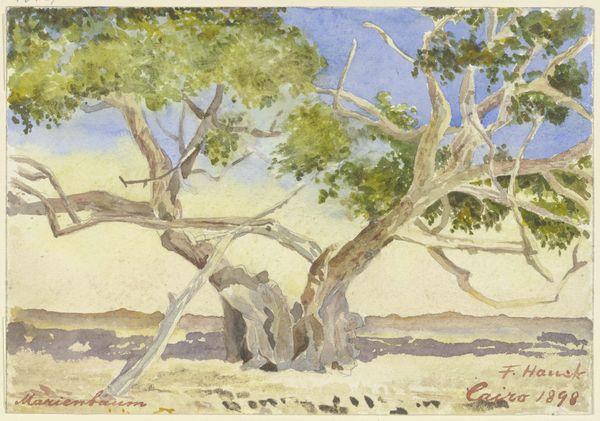
Copyright: Public domain
Curator: Looking at this watercolor painting, Olive Trees, executed by Ivan Bilibin in 1929, I'm immediately drawn to how Bilibin captured light. Editor: The initial impact is gentle. There's a tranquility in the rendering; a kind of washed out tonality creates a quiet, almost sleepy atmosphere. Curator: I find it fascinating how Bilibin, predominantly known for his book illustrations steeped in Russian folklore, adapts his meticulous style to a landscape. Here we see, in a way, a material study through the artist's gaze that attempts to capture and convey the beauty he discovers in his new environment. The olive trees, of course, and the implications these Mediterranean flora bring forth, are key in comprehending the work. Editor: Note also the compositional arrangement, how the dark mass of the trees contrasts so remarkably with the light-soaked pathway. There's almost a stage-like quality to the scene. He deliberately flattens the space using high key colors in an almost decorative fashion. Curator: That spatial flattening also lends itself to his signature style—one of flatness influenced by the world of books. There's something to be said, too, about how his previous work served as a product of the Russian art scene. I cannot help but wonder, does that labor carry over into this artwork? The creation process of illustrating books versus capturing nature? Editor: Regardless of those elements, it evokes an almost dreamlike sense of place. Bilibin reduces form into geometric passages; notice the subtle, though definite brushwork which enlivens the space. Curator: Overall, exploring Bilibin's Olive Trees provides an unusual case study in observing the means of image creation; it gives insight into a book illustrator venturing out and capturing the environment. Editor: Yes, ultimately it offers us a very particular interpretation of space through light, texture, and a highly considered visual structure.
Comments
No comments
Be the first to comment and join the conversation on the ultimate creative platform.

